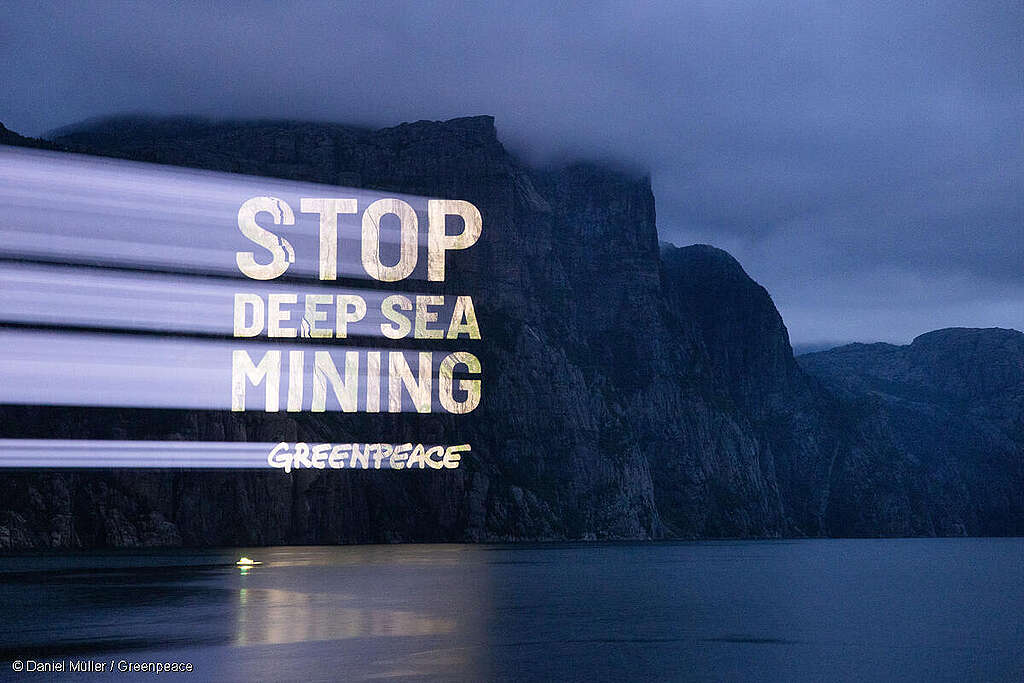
PETITION: Stop Deep Sea Mining
An emerging new industry could destroy this fragile and unique deep sea environment before we truly understand its importance.
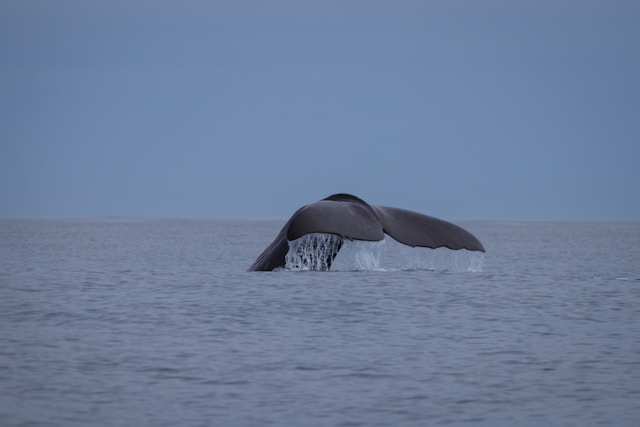
Contact: Lisa Linowes (603) 838-6588 lisa@saverightwhales.org
NEW HAMPSHIRE (April 14) — The Save Right Whales Coalition (SRWC) has filed an amicus brief with the U.S. Supreme Court urging the Court to review two cases challenging the Bureau of Ocean Energy Management’s (BOEM) approval of the Vineyard Wind 1 offshore wind project. The brief argues that BOEM unlawfully reinterpreted the Outer Continental Shelf Lands Act (OCSLA) to expand its discretionary authority and bypass statutory protections for ocean users and marine ecosystems.
“Congress imposed clear, enforceable limits on BOEM’s authority,” said Lisa Linowes a spokesperson for SRWC. “Rather than following the law, BOEM reshaped it to serve policy objectives — without public input or congressional approval.”
Key Points from the Amicus Brief:
“This is a revealing admission,” said Linowes. “BOEM is approving projects it knows will harm fishermen and other ocean users, while relying on voluntary, developer-funded payments that have no basis in law. Compensation is not prevention — and it’s not a substitute for statutory compliance.”
Why This Case Matters
OCSLA § 8(p)(4) requires BOEM to ensure offshore wind projects comply with multiple statutory safeguards, including protecting existing ocean uses. The APA prohibits agencies from adopting binding rules or new interpretations without public rulemaking. The SRWC brief contends that BOEM’s failure to follow these legal obligations reflects a pattern of administrative overreach, enabled by improper judicial deference.
“If left unchecked BOEM’s conduct would allow agencies to bypass Congress by issuing internal memos and shifting statutory meaning without transparency or accountability,” Linowes said.
View the brief: https://www.supremecourt.gov/DocketPDF/24/24-971/355222/20250409220626080_24- 966%2024-971%20Brief%20of%20Amicus.pdf
US Supreme Court Docket:
https://www.supremecourt.gov/search.aspx?filename=/docket/docketfiles/html/public/24-971.html
The Save Right Whales Coalition (https://saverightwhales.org/) is a broad alliance of scientists, fishermen, environmental advocates, and community groups committed to protecting endangered marine species and defending the lawful use of ocean resources.
Photo by Tim Schröer on Unsplash
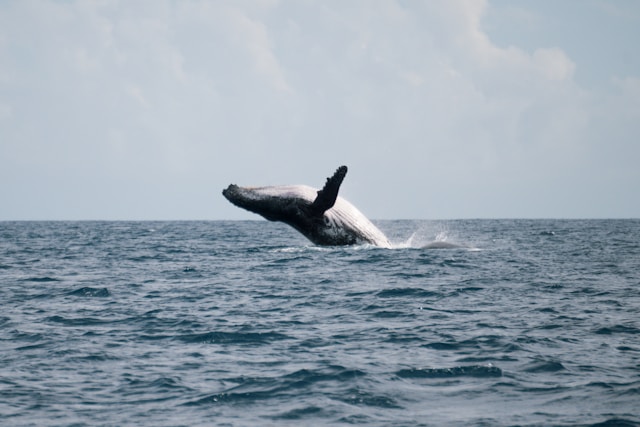
FOR IMMEDIATE RELEASE
Organization: Save Long Beach Island, Inc. (Save LBI)
Contact: Bob Stern, Ph.D., President
Email: info@savelbi.org
Phone: 917-952-5016
Contact: Attorney – Thomas Stavola, Jr., Esq. Email: tstavolajr@stavolalaw.com
Phone: 732-539-7244
January 13, 2025
Save LBI Sues U.S. Agencies and Atlantic Shores Offshore Wind, Challenging Federal Approvals Greenlighting Marine Ecosystem Devastation, Including Risks to Critically Endangered Whales
LONG BEACH ISLAND (LBI), NEW JERSEY, January 13, 2025 – Save LBI, an organization that has been actively litigating issues surrounding marine mammal, human health, economic and other impacts connected to offshore wind industrialization off New Jersey since 2022, has filed suit against the U.S. Department of Commerce, National Marine Fisheries Service, Bureau of Ocean Energy Management, U.S. Department of Interior, and the Atlantic Shores Offshore Wind project for violations of a number of federal environmental statutes.
“This lawsuit serves as the first of its kind, launching a wide-ranging challenge against Atlantic Shores’ federal approvals, based on violations of environmental statutes such as the National Environmental Policy Act, the Endangered Species Act, the Marine Mammal Protection Act, the Outer Continental Shelf Lands Act, the Coastal Zone Management Act, and the Clean Air Act,” said Thomas Stavola, Jr., Esq., the attorney representing Save LBI. “We believe we have organized a compelling case that will demonstrate that these federal agencies were derelict in their respective duties to take critical information into account, and moreover, made arbitrary assumptions that entirely failed to disclose and consider the injurious impacts of the Atlantic Shores South project.”
Bob Stern, Ph.D., the primary plaintiff and president of Save LBI, further explained, “For example, “the agencies assume, incorrectly, that no North Atlantic right whales will suffer injury or death as a result of the Atlantic Shores South project. The evidence contradicts that assumption. In fact, our review and independent mathematical analyses shows a systemic underestimation of impact, and clearly indicate that the noise caused by pile driving, and, soon after, perpetual operational noise, will injure and kill high numbers of marine mammals — and, yes, injure and kill a number of North Atlantic right whales, a critically endangered animal that cannot afford to suffer any deaths given their numbers are now less than 340 total.”
The lawsuit ultimately seeks to have all federal approvals rescinded and the Atlantic Shores South project halted — stopping construction and preventing devastation to marine mammal life in the NJ/NY Bight regional waters. Eight other co-plaintiffs have joined Save LBI in this action, many of whom will be severely economically impacted due to the egregious harm to the marine ecosystem and the aesthetic, recreational blight imposed on the Jersey Shore via the circa 200 1,000-foot-plus high monstrosities slated to be constructed starting less than 9 miles east of Long Beach Island.
These inexcusable damages by the Atlantic Shores South project are not limited to marine mammal devastation, but also include significant impacts to tourism, shore economies, statewide energy bills, national defense, vessel navigation, and home values — all of which have been swept under the rug by much of the mainstream media, many elected officials, the Atlantic Shores company, and the federal agencies in their inexplicable haste to approve a project still in search of a clear purpose and need.
“We hope this lawsuit will serve as the vehicle to finally illuminate the damage being wrought here and to impose significant pressure on Atlantic Shores to withdraw, as their obfuscation of the project’s true effects are indefensible. The agencies simply cannot objectively argue that their approvals were made in accordance with the best science,” concluded Bob Stern.
This lawsuit was filed in federal court in the United States for the District of New Jersey on January 10, 2025.
About Save LBI
Save Long Beach Island (Save LBI) is an organization of citizens and businesses on and off the Island working together to protect the ocean and Long Beach Island and neighboring communities from the destructive impact of the Atlantic Shores project and potentially other offshore wind projects. As a not-for-profit, non-partisan entity, we do not endorse any political candidates but vigorously pursue policies and actions that protect the Island and New Jersey communities. The organization is led by Beach Haven resident Bob Stern, a Ph.D. engineer with
experience in environmental law who previously managed the U.S. Department of Energy’s office overseeing environment protection related to energy programs and projects.
Save LBI is fighting to stop the ill-conceived Atlantic Shores projects. Please visit SaveLBI.org to join the fight and consider making a donation.
ACK for Whales To File New Suits to Stop Environment-Destroying New England Wind Offshore Turbine Project
Grassroots Group Has sent Notices to Federal Government Warning of Litigation Because Government Broke Multiple Federal Laws
“We’re not going to stop fighting for the environment.”
NANTUCKET, MA, January 13, 2025 – ACK for Whales, the Nantucket grassroots group (formally known as Nantucket Residents Against Turbines) fighting to protect the environment from the devastation posed by New England Wind’s giant offshore wind project, said today that it has filed two Notices of Intent to sue the Department of Interior and other federal agencies for violating federal laws intended to protect the environment and endangered species.
The announcement comes as the group revealed the United States Supreme Court declined on Monday to hear the group’s petition for certiorari from lower court decisions on a different legal issue and involving a different project.
The new litigation is broader in scope than the suit previously filed against Vineyard Wind and seeks to halt and preclude construction by New England Wind of offshore wind turbines.
“New England Wind is an existential threat to our environment and while we are disappointed by the Court’s decision to not hear our appeal, we’re not going to stop fighting for the environment,” ACK for Whales President Vallorie Oliver said.
The Notices of Intent were sent Monday to the Departments of the Interior and Commerce, the Army Corps of Engineers, the Environmental Protection Agency, the Bureau of Ocean Energy Management (BOEM), and the National Oceanic and Atmospheric Administration and informed the federal agencies that decisions made to allow New England Wind’s project to build turbines off Nantucket and Martha’s Vineyard violate the Endangered Species, Marine Mammal Protection, National Historic Preservation, and Outer Continental Shelf Land Acts.
The letters warn that if the agencies do not reverse their approvals, ACK for Whales will proceed with its suits when the 60 day Notice period expires to prevent “substantial” harm to biological resources, including the endangered North Atlantic Right Whale, interference with economic activities in the high seas and territorial seas, including tourism, commercial fishing, and whale watching.
“The government continues to mislead the people of Massachusetts,” Oliver said, “making their usual false claims about offshore wind. The state’s press release claimed building these whale- killing monstrosities will ‘reduce the state’s carbon emissions by the equivalent of taking one million gas-powered cars off the road. Collectively, these projects will create thousands of jobs and generate billions of economic activity.’
“The State made the same false claims about Vineyard Wind and since that project was begun, BOEM has admitted building offshore wind will have no meaningful impact on reducing climate change, Vineyard Wind admits it’s not keeping track of the jobs it allegedly creates in Massachusetts, and its CEO admits that our power bills are going up.
“We can’t figure out why the government keeps giving away the store to foreign energy companies like Avangrid,” Oliver said. “We’re a non-partisan organization, we don’t do politics, but we hope Mr. Trump keeps his word and ends this madness on Day One of his Administration,” Oliver said.
About ACK for Whales
ACK for Whales is a group of Nantucket community members who are concerned about the negative impacts of offshore wind development off the south shores of our beloved Island. The Massachusetts/Rhode Island wind area is bigger than the state of Rhode Island and will ultimately be occupied by 2,400 turbines, each taller than the John Hancock building in Boston, connected by thousands of miles of high voltage cables. There are many unanswered questions, and the permitting of these massive utility projects has happened largely out of the public eye. We provide a community group of neighbors and friends, who all love the same place.
Contacts
Media: Mark Herr
203-517-8957
Mark@MarkHerrCommunications.net
Photo by Chloe Christine on Unsplash
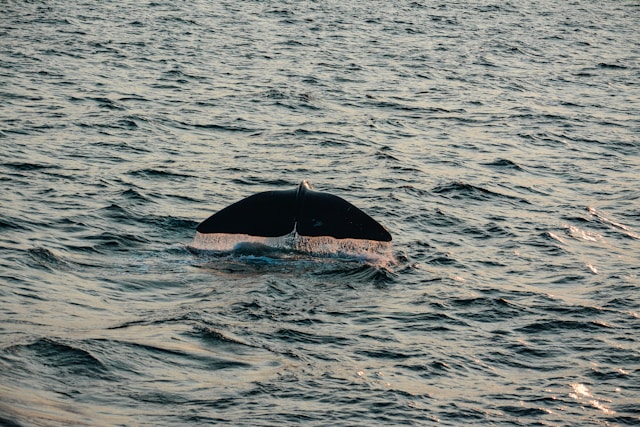
By Olivia Rosane is a staff writer for Common Dreams from Dec 02, 2024
Environmental organizations cheered as Norway’s controversial plans to move forward with deep-sea mining in the vulnerable Arctic Ocean were iced on Sunday.
The pause was won in Norway’s parliament by the small Socialist Left (SV) Party in exchange for its support in passing the government’s 2025 budget.
“Today marks a monumental victory for the ocean, as the SV Party in Norway has successfully blocked the controversial plan to issue deep-sea mining licenses for the country’s extended continental shelf in the Arctic,” Steve Trent, CEO and founder of the Environmental Justice Foundation, said in a statement. “This decision is a testament to the power of principled, courageous political action, and it is a moment to celebrate for environmental advocates, ocean ecosystems, and future generations alike.”
Norway sparked outrage in January when its parliament voted to allow deep-sea mining exploration in a swath of its Arctic waters larger than the United Kingdom. Scientists have warned that mining the Arctic seabed could disturb unique hydrothermal vent ecosystems and even drive species to extinction before scientists have a chance to study them. It would also put additional pressure on all levels of Arctic Ocean life—from plankton to marine mammals—at a time when they are already feeling the impacts of rising temperatures and ocean acidification due to the burning of fossil fuels.
“The Arctic Ocean is one of the last pristine frontiers on Earth, and its fragile ecosystems are already under significant stress from the climate crisis,” Trent said. “The idea of subjecting these waters to the destructive, needless practice of deep-sea mining was a grave threat, not only to the marine life depending on them but to the global community as a whole.”
“Thankfully, this shortsighted and harmful plan has been halted, marking a clear victory in the ongoing fight to protect our planet’s blue beating heart,” Trent continued.
In June, Norway announced that it would grant the first exploratory mining licenses in early 2025. However, this has been put on hold by the agreement with the SV Party.
“This puts a stop to the plans to start deep-sea mining until the end of the government’s term,” party leader Kirsti Bergstø said, as The Guardian reported.
Norway next holds parliamentary elections in September 2025, so no licenses will be approved before then.
The move comes amid widespread opposition to deep-sea mining in Norway and beyond. A total of 32 countries and 911 marine scientistshave called for a global moratorium on the practice. More than 100 E.U. parliamentarians wrote a letter opposing Norway’s plans specifically, and the World Wide Fund for Nature (WWF) has sued to stop them.
“This is a major and important environmental victory!” WWF-Norway CEO Karoline Andaur said in a statement. “SV has stopped the process for deep seabed mining, giving Norway a unique opportunity to save its international ocean reputation and gain the necessary knowledge before we even consider mining the planet’s last untouched wilderness.”
Haldis Tjeldflaat Helle, the deep-sea mining campaigner at Greenpeace Nordic, called the decision “a huge win.”
“After hard work from activists, environmentalists, scientists, and fishermen, we have secured a historic win for ocean protection, as the opening process for deep-sea mining in Norway has been stopped,” Helle said in a statement. “The wave of protests against deep-sea mining is growing. We will not let this industry destroy the unique life in the deep sea, not in the Arctic nor anywhere else.”
However, Norway’s Arctic waters are not entirely safe yet.
Prime Minister Jonas Gahr Stoere, of the Labour Party, toldTV2, on Sunday, “This will be a postponement.”
The government said that other work to begin the process of deep-sea mining, such as drafting regulations and conducting environmental impact surveys, would move forward. Norway is currently governed by the Labour and Center parties. The two parties leading in polls for September’s elections—the Conservatives and Progress Party—also both back deep-sea mining, according toReuters.
“If a new government attempts to reopen the licensing round we will fight relentlessly against it,” Frode Pleym, who leads Greenpeace Norway, told Reuters.
Other environmental groups tempered their celebrations with calls for further action.
Trent of the Environmental Justice Foundation said that “while today is a cause for celebration, this victory must not be seen as the end of the struggle.”
“We urge Norway’s government, and all responsible global actors, to make this a lasting victory by enshrining protections for the Arctic Ocean and its ecosystems into law, and coming out in favor of a moratorium or ban on deep-sea mining,” Trent added. “It is only through a collective commitment to sustainability and long-term stewardship of our oceans that we can ensure the health of the marine environment for generations to come.”
Trent concluded: “Today, thanks to the SV Party and all those around the world who spoke up against this decision, the ocean has won. Now, let’s ensure this victory lasts.”
Andaur of WWF said that this was a “pivotal moment” for Norway to “demonstrate global leadership by prioritizing ocean health over destructive industry.”
As WWF called on Norway to abandon its mining plans, it also urged the nation to reconsider its exploitation of the ocean for oil and gas.
“Unfortunately, we have not seen similar efforts to curtail the Norwegian oil industry, which is still getting new licenses to operate in Norwegian waters, including very vulnerable parts of the Arctic,” Andaur said. “Norway needs to explore new ways to make money without extracting fossil fuels and destroying nature.”
Greenpeace also pointed to the role Norway’s pause could play in bolstering global opposition to deep-sea mining.
“Millions of people across the world are calling on governments to resist the dire threat of deep-sea mining to safeguard oceans worldwide,” Greenpeace International Stop Deep-Sea Mining campaigner Louisa Casson said. “This is a huge step forward to protect the Arctic, and now it is time for Norway to join over 30 nations calling for a moratorium and be a true ocean champion.”
Photo by Alain Rieder on Unsplash
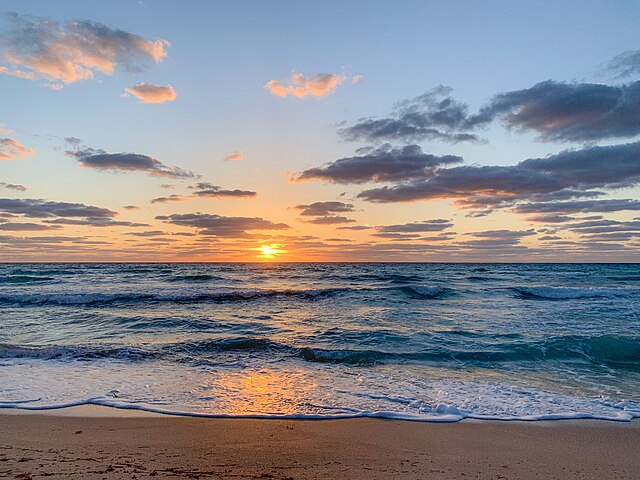
Editor’s note: Protecting the ocean means life protection, our ecosystems depend on intact and clean oceans. Even though the aim is to protect 30% of the planet, it’s not clear what conservation actually means worldwide. That leads to ineffective conservation measures and demands more knowledge about oceanic ecosystems and also implementing it. For the most part protected areas don’t need to be managed, they just need to have humans leave them alone.
There’s never been more momentum for protecting the ocean, but new research finds that many efforts fail to protect endangered species — or have barely gotten off the drawing board.
Ocean ecosystems and the marine wildlife that depend on them are under threat as never before. Between overfishing, climate change, plastic pollution, and habitat destruction, it’s a bad time to be a prawn, cod, seabird, or whale.
There’s no single silver bullet solution to the biodiversity crisis, but in recent years, many people in the environmental community have focused on the goal of “30 x 30”: protecting 30% of the planet by the year 2030. Many nations have made promises toward that goal, including the United States, which has adapted it into the “America the Beautiful” initiative.
Measurable goals like this provide nations with clear, quantifiable conservation goals that others in the international community can follow, verify, or use to identify shortfalls and push for more action.
At the same time, many experts warn that number-based targets like “protect 30%” lend themselves to incentives to arguably-kinda-sorta protect as much as possible, rather than protecting the most ecologically important areas. Governments, for instance, can use what’s euphemistically referred to as “creative accounting” — counting things as protected that probably should not be considered protected.
Two new research papers examine some of this creative accounting in the ocean. Together, they stress important things to keep in mind when creating protected areas and when assessing their usefulness.
A surprisingly common issue in area-based conservation happens when a government declares a new protected area to help save a threatened species of concern…without first checking to see if the species actually lives within those boundaries.
It happens more often than you might think. A new study published in the Journal of Animal Ecology looked at 89 marine protected areas in Europe that are supposed to protect diadromous fish species (those that migrate between ocean and fresh water, like salmon or some eels) of conservation concern.
Their findings are shocking: Many of these areas protect habitats where those fish species do not live, and very few of them protect the most important core habitat for any diadromous fish species.
“A marine protected area should be an area that protects part of the marine environment,” says Sophie Elliott of the Wildlife Conservation Trust, the study’s lead author. “I say ‘should’ because there are a lot of parks that don’t have enough thought put into them. Quite often things are done quickly without thinking or understanding the situation.”
Sometimes this happens because of limited resources for scientific study. In other words, according to Elliot, we simply don’t know enough about species’ habitat use to protect their key habitat, at least not yet. This is known as the rare-species paradox: Endangered species are often hard to find and study, especially in the vast ocean, so it can be hard to understand what habitat qualities they need to thrive, even if we can hypothesize that protecting certain regions will mitigate some of the threats the species face.
Other times government officials, in search of positive publicity, announce a new protected area that was studied but wasn’t intended to protect a species.
“We had a series of MPAs that were supposed to have measures in place to protect certain species,” Elliott says. “But then an extra species got tacked on to the stated goals of the MPA, and it wasn’t effective for that species.” She declined to identify examples, given the political sensitivities of some of these protected areas.
In addition to gathering more data and always basing protected-area design on the best available data, Elliott recommends a more holistic approach to designating future protected areas.
“When people think about putting MPAs in place, look at the whole range of biodiversity that exists within it, because there might be many endangered and protected species,” she says. “You need to know what’s in that MPA and do ecosystem-based management” — management focusing on the whole ecosystem and not just individual species. It’s the difference between protecting cod by establishing fishing quotas versus protecting cod by also managing their habitat and predators and food and other things that eat that food. “We’ve long been calling for that, but we aren’t really working toward it at all,” she says.
Another key issue in marine protected area management is what should count as “protected.”
Some areas restrict oil and gas extraction but allow any and all fishing. Some allow swimmers and other recreation, while others say people can’t even go scuba diving.
In one glaring recent example, the advocacy group Oceana U.K. found evidence that the United Kingdom allows bottom trawling in many of its MPAs. Bottom trawling is a fishing method that’s extremely destructive to sensitive habitat types; it’s been compared to clear-cutting forests to catch rabbits.
“At the end of the day … there’s no one clear definition of what conservation means around the world,” says Angelo Villagomez, a senior fellow at the Center for American Progress who has studied the issue. “One of the negative externalities of the global push to protect 30% of the ocean is that some governments are more concerned with being able to say that they protected 30% of the ocean than they are concerned with delivering meaningful biodiversity protections.”
Villagomez and his colleagues have identified another big issue: According to their new analysis in the journal Conservation Letters, fully one-quarter of the 100 largest marine protected areas — as cataloged in the United Nations and IUCN’s world database of protected areas — are announced but not yet implemented. Many have no clear timeline of when the formal protections might be put into place, or what those regulations might look like.
For now, those areas exist on paper but remain unprotected in the real world. For example, the paper cites the OSPAR MPA network covering 7% of the Northeast Atlantic, which currently appears to have no concrete protections.
This wide range of rules and inconsistent protections makes it harder to protect the ocean — or to count it toward 30×30 goals.
Governments are not supposed to submit anything to the world database of protected areas until something is designated, “but they do, and that’s just the reality,” says Villagomez.
But here’s the biggest problem: The study found that many of the world’s largest MPAs lack the scientific knowledge, funding, and political support to be effective.
“We know that MPAs work when they are well designed and provided the funding to operate,” Villagomez told me. “But for about one-third of the MPAs we studied, based on everything we know about protected area science, they will never result in positive outcomes for biodiversity.”
The conclusions of these two papers are clear: Too many marine protected areas are poorly designed and sited in places where the species they’re ostensibly trying to protect do not actually live. Also, too many allow destructive extractive industries to operate, limiting the benefits of any protection.
Despite these setbacks, Villagomez remains optimistic about the future of MPA-based protections.
“The good news is that this works really well about one-third of the time — if you play baseball and you hit the ball 300 out of 1,000 times, you’re going to the Hall of Fame,” he says. “There’s a ton of science that shows that well-designed well-implemented MPAs work, and for one-quarter of the MPAS we looked at, they’re well designed and are just lacking funding for implementation.”
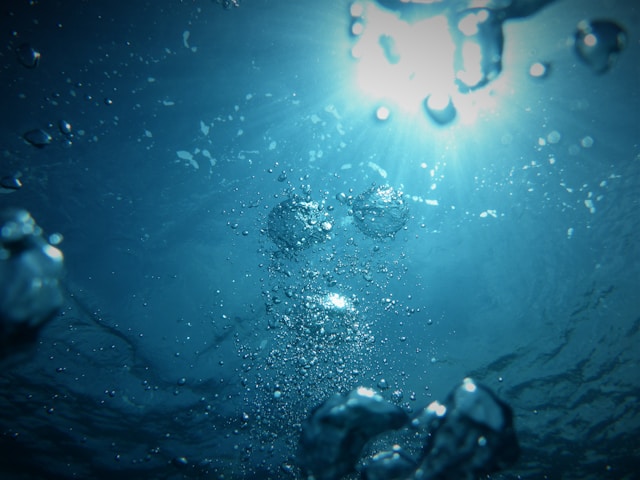
Nick Young 26 July 2024 / Greenpeace Scientists have found a source of ‘dark oxygen’ 4,000 meters below the surface of the Pacific in the target zone for deep sea mining. The discovery could have far-reaching implications for science and the wannabe deep sea mining industry. It’s often said that we know more about the surface of the moon than we do about the deep ocean. This new discovery of dark oxygen shows how true that is, and underlines the need to stop a new deep sea mining industry from targeting its source.
What scientists mean by ‘dark oxygen’ is that – in the total darkness of the very deep ocean – around 4,000 meters below the surface of the Pacific Ocean – oxygen is being produced – in the dark.
It’s previously been thought that oxygen on Earth is produced on land and at the surface of the ocean, where sunlight makes plant photosynthesis possible.
Plants on land are the biggest producers of oxygen, but marine algae and phytoplankton also produce it. These microscopic organisms perform photosynthesis in the ocean, which covers about 70% of the Earth’s surface.
Blue-green algae – or cyanobacteria – are some of the oldest organisms on Earth and can also produce oxygen. They were among the first to do so through photosynthesis, and they also need sunlight.
The common factor in oxygen production is sunlight – until this discovery of dark oxygen showed that oxygen is also being produced in another way in the deep dark sea.
The dark oxygen discovery is being hailed as a groundbreaking scientific discovery, but it also has other implications.
Nick Owens, the director of the Scottish Association for Marine Science (SAMS) says: “The fact that we’ve got another source of oxygen on the planet other than photosynthesis has consequences and implications that are utterly profound.”
Andrew Sweetman, who was one of the SAMS scientists involved in the research, says in a video: “This research potentially sheds light on where life began on the planet. This discovery has shown that, well, maybe there was another source of oxygen a long time ago and aerobic life or life that breathes oxygen could have persisted before the rise of photosynthesis — and if it’s happening on our planet could it be happening on other planets too?”
But as well as those wider implications, the discovery has significant and immediate implications for the controversial deep sea mining industry which somewhat ironically sponsored the science.
Here’s the thing. This dark oxygen, instead of being produced by plants and sunlight, is being produced by strange potato-shaped metallic lumps found on the deep sea floor.
It turns out that these lumps – otherwise known as ‘polymetallic nodules’ – give off almost as much electricity as AA batteries! By reacting with salt water, their electrical charge produces oxygen way down there on the seabed of the deep ocean through a process known as ‘seawater electrolysis’ which splits seawater into hydrogen and oxygen.
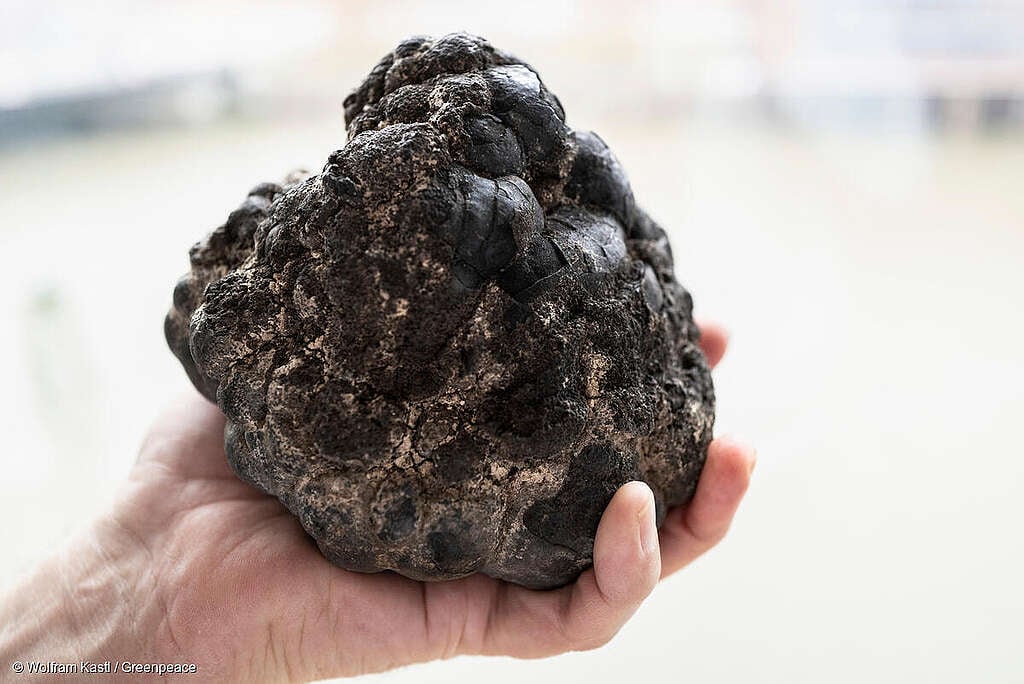
So, these little metallic lumps, which the wannabe deep sea miners have been metaphorically calling ‘batteries in a rock’ actually turned out to be just that – and they’re producing dark oxygen that could play a critical role in the deep ocean ecology.
The discovery of metallic nodules producing dark oxygen has been a huge surprise to science which could even require a new way of thinking about how life first began on planet Earth.
But it could also be the final straw in the case against deep sea mining. It could stop the industry before they begin.
The discovery was made in the Clarion-Clipperton Zone (CCZ), a huge flat area of the seafloor that stretches between Hawaii and Mexico, where mining companies like The Metals Company have plans to start harvesting these very same nodules that turn out to be producing all this dark oxygen.
These oxygen-producing nodules could be supporting a whole range of known and unknown deep sea lifeforms. Dark oxygen could be a critical factor in the deep sea ecosystem!
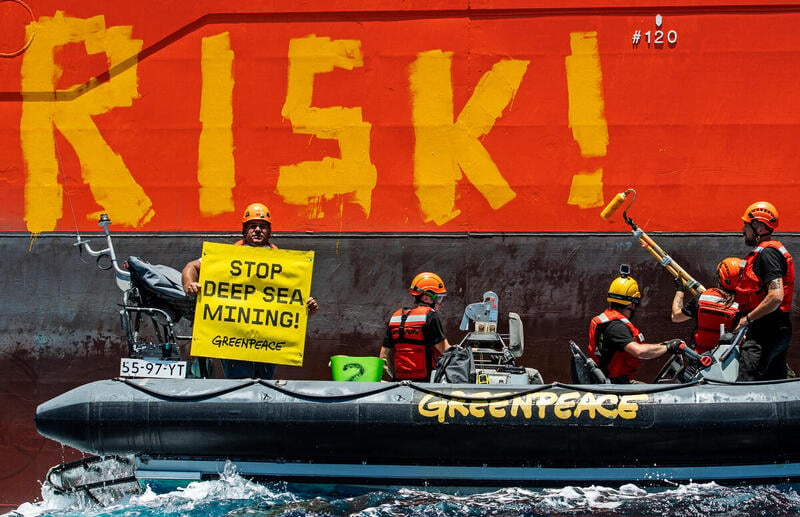
Greenpeace and others have long said that this new extractive mining industry should not be allowed to start in the very deep ocean because the life there is so little understood, and the ecosystems are fragile and potentially vital for the health of the ocean and all life on Earth.
This new discovery underlines the point.
The timing is good because world governments are meeting in Jamaica right now to decide the fate of this new mining industry. They’ll be deciding whether or not to allow deep sea miners like The Metals Company to go ahead with their plans to drop giant mining robots onto the seafloor to start harvesting these life-sustaining nodules.
Greenpeace is in Jamaica arguing strongly that deep sea mining should not be allowed to go ahead – especially now that we know the deep ocean is another source of oxygen that could be vital for the health of the ocean and all of us who depend on it.
In the climate and biodiversity crisis, we know that nature, in all its diversity, must be protected.

PETITION: Stop Deep Sea Mining
An emerging new industry could destroy this fragile and unique deep sea environment before we truly understand its importance.
Photo by Jong Marshes on Unsplash
For more information contact Deep Sea Defenders.